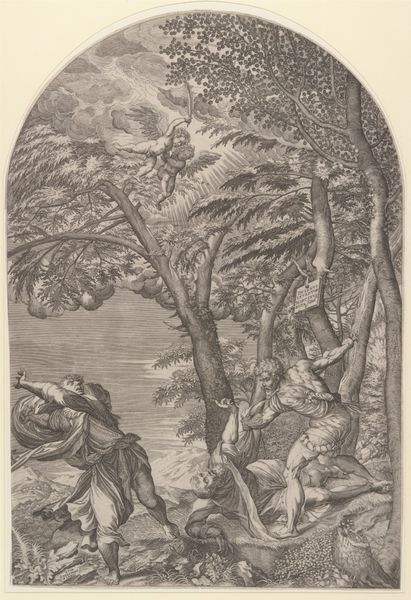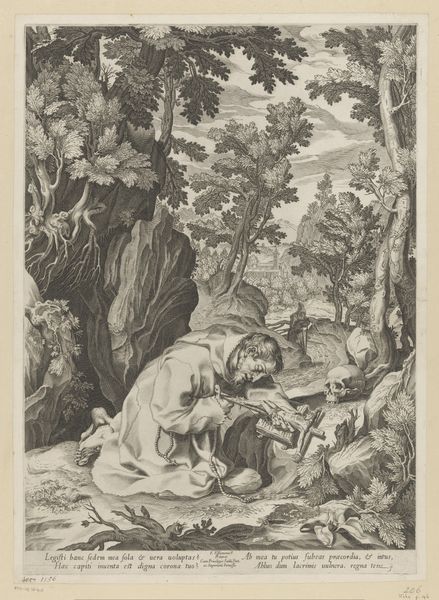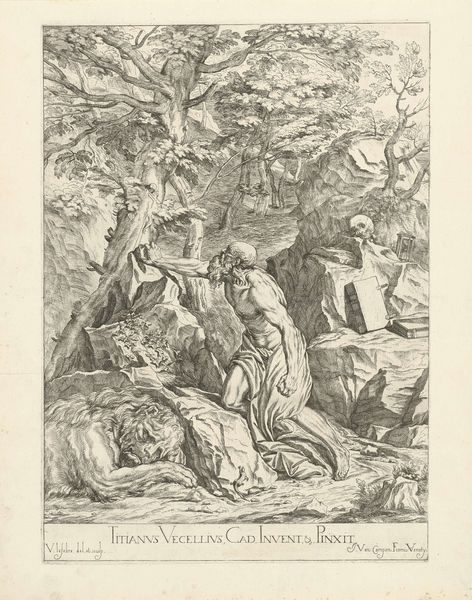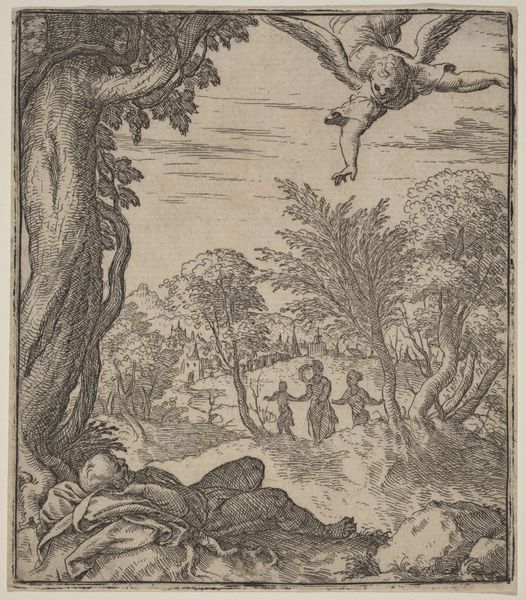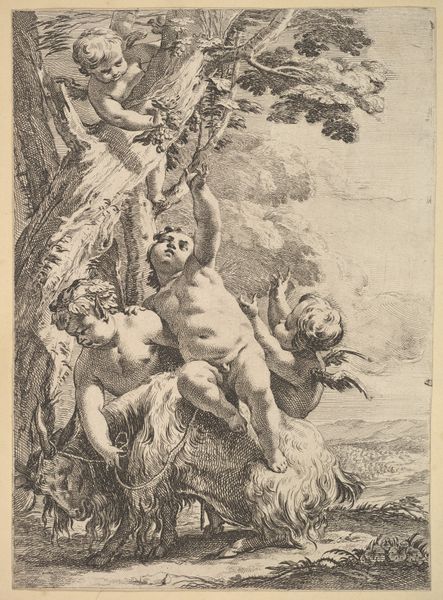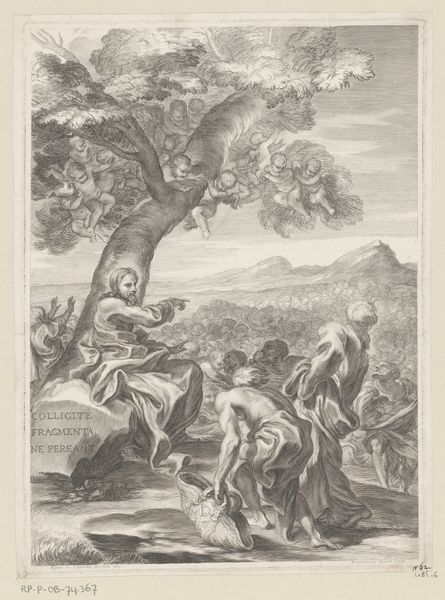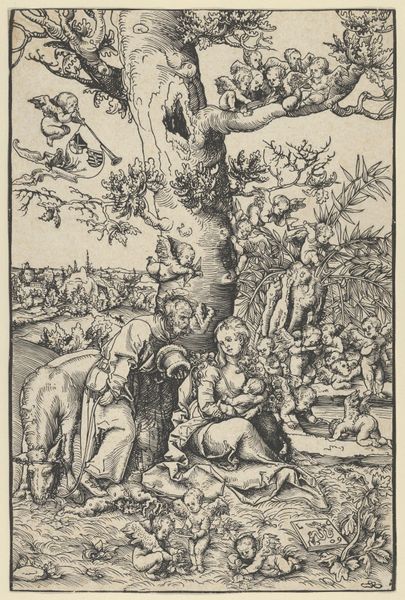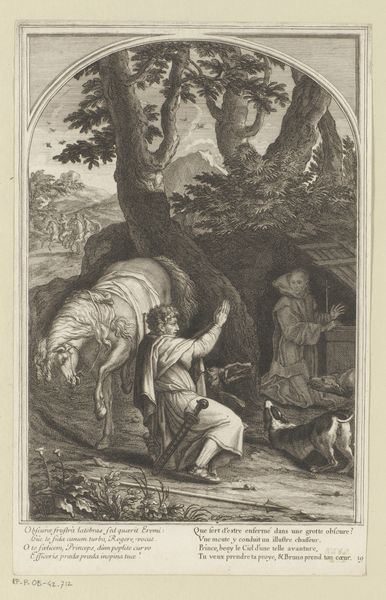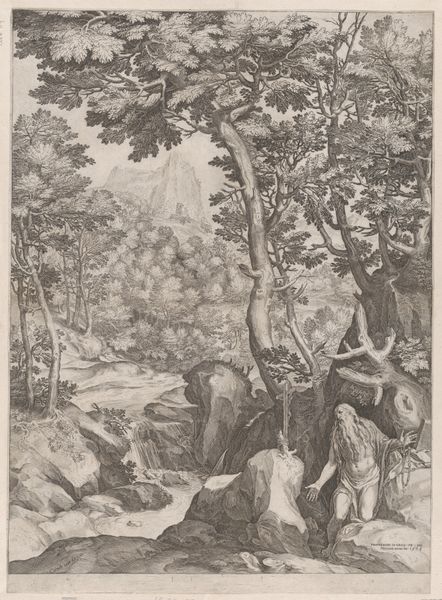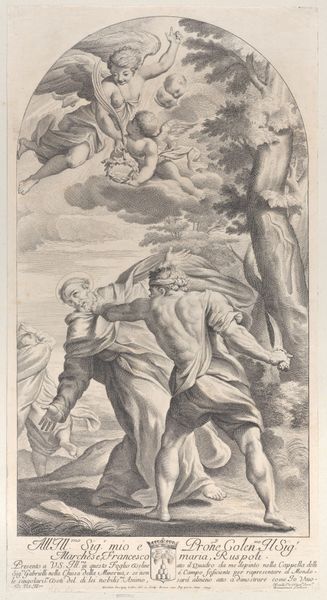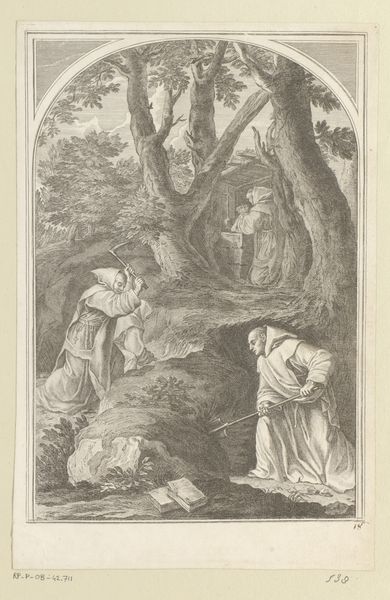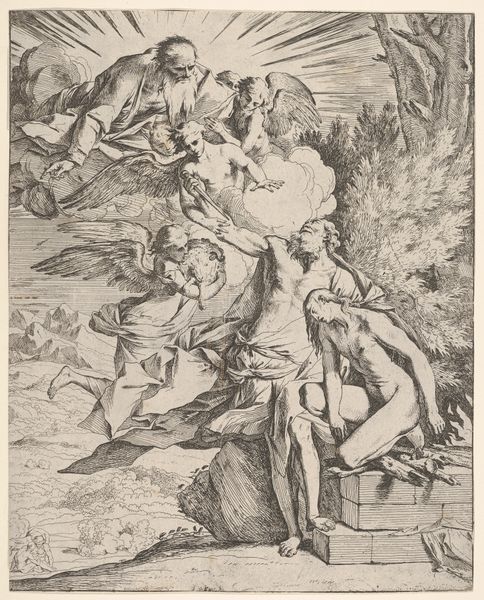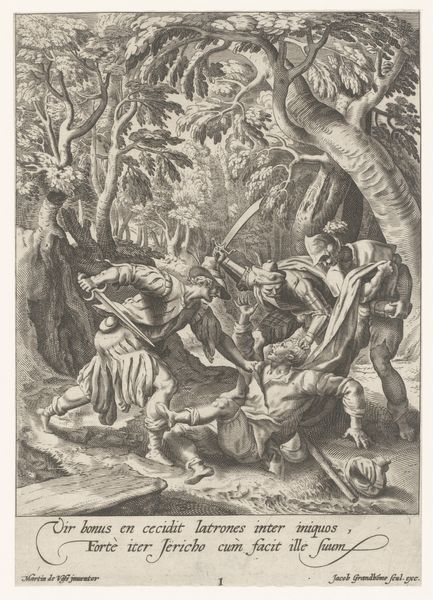
drawing, print, etching, paper, ink
#
tree
#
drawing
#
ink drawing
#
narrative-art
# print
#
etching
#
landscape
#
figuration
#
paper
#
11_renaissance
#
ink
#
history-painting
#
northern-renaissance
Dimensions: Sheet: 9 13/16 x 7 7/8 in. (25 x 20 cm)
Copyright: Public Domain
Curator: This is Maarten van Heemskerck’s “The Parable of the Good Samaritan,” an etching created in 1549. It's currently housed at the Metropolitan Museum of Art. Editor: Gosh, the mood is immediately bleak. Stark, even. The line work is so precise it feels almost…clinical. Curator: It’s certainly a departure from more romantic interpretations of the story. Heemskerck was working within a period of religious upheaval, though. Consider the socio-political context; the Reformation was reshaping artistic patronage and themes. Editor: I can see that. There’s a tension here. This isn’t just a straightforward Bible story. It's visceral. You feel the vulnerability of the figure on the ground. Curator: Precisely! Note how Heemskerck positions the victim centrally, almost foregrounded. It directs the viewer to confront human suffering directly. The landscape itself is harsh, mirroring the moral landscape. Editor: And those trees! They look almost gnarled with judgment. But there's a strange beauty in the composition, this dramatic use of light and shadow, pulling my eye around the scene... I almost missed the town in the background. Curator: Heemskerck used etching techniques popular at the time to create depth and texture, emphasizing the gritty realism of the scene, reflecting broader cultural debates about piety and action. Editor: It's funny, I initially thought it was just gloomy, but now I'm struck by how much hope is *actually* packed into this. A promise of kindness against the stark reality of abandonment, rendered so deftly by the artist. I love how Heemskerck doesn’t shy away from depicting brutality, while quietly hinting at the redemptive power of empathy. Curator: Well said. The parable’s enduring resonance rests, perhaps, in its ability to consistently invite fresh interpretations shaped by prevailing cultural forces. Editor: A stark and gorgeous meditation on human nature, expertly rendered! I'm heading for a strong cup of tea and a bit of personal reflection now. Thanks for that dive.
Comments
No comments
Be the first to comment and join the conversation on the ultimate creative platform.
